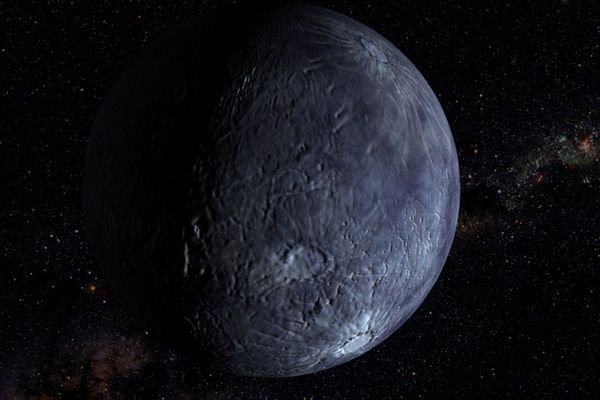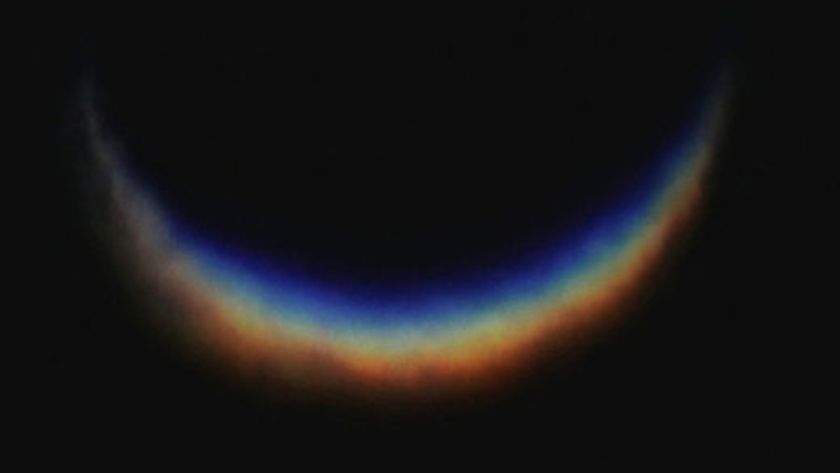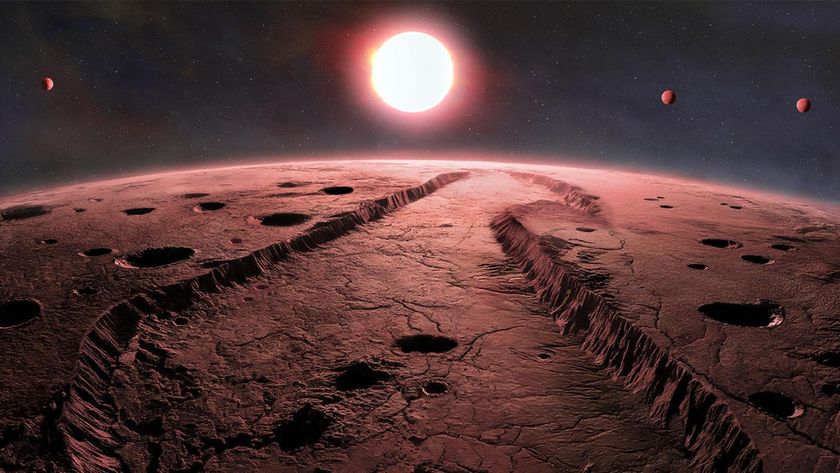Astronomers Doubt Giant Planet 'Tyche' Exists in Our Solar System

A duo of planetary astronomers has grabbed media attention by claiming a planet four times the size of Jupiter may be lurking in the outer solar system. They call the planet Tyche.
Many astronomers, however, say it probably isn't there.
The claim, by John Matese and Daniel Whitmire of the University of Lousiana-Lafayette, is not new: They have been making a case for Tyche since 1999, suggesting that the giant planet's presence in a far-flung region of the solar system called the Oort cloud would explain the unusual orbital paths of some comets that originate there.
"There's evidence that some Oort cloud comets display orbital peculiarities," Matese told Life's Little Mysteries. "We're saying that perhaps the pattern is indicative that there's a planet there."
Although their argument is similar to the one they originally made, "what's new is that this pattern has persisted," Matese said. "It's possible that it's a statistical fluke, but that likelihood has lessened as more data has accumulated in the past 10 years."
Matese says NASA's WISE telescope may have already collected infrared data from Tyche that would be hard to pick out from within the telescope's immense database. "The spectrum we have predicted is uncertain, and there may be a great many signals that are similar to what are expected for our object. So this may take time," he said. A signal from Tyche--if it's there--could be located within two years, he said.
Not everyone is as optimistic.
Sign up for the Live Science daily newsletter now
Get the world’s most fascinating discoveries delivered straight to your inbox.
Required: 'Incredible proof'
Matthew Holman, a planetary scientist at the Harvard Smithsonian Institute of Astrophysics, is not a Tyche believer. Though he hasn't read the latest version of Matese's and Whitmire's argument, Holman told Life's Little Mysteries, "Based on past papers that I've seen looking at where long-period comets came from in the sky, and finding signatures of large perturbers of the Oort cloud, I was not persuaded by the evidence."
Hal Levison, a planetary scientist at the Southwest Research Institute in Boulder, Colo., who recently authored a paper on the Oort cloud for the journal Science, seconded that opinion.
"I haven't read this version of his paper, which he claims now has better statistics than the previous attempts, where he also claimed that he saw evidence of this object," Levison said. "But in previous papers, I really think he did his statistics wrong. Incredible claims require incredible proof and I really believe that he doesn't understand how to do this statistical analysis correctly."
"What Matese claims is that he sees an excess of comets coming from a particular place, which he attributes to the gravitational effects of a large planet in the Oort cloud. I have nothing against the idea, but I think the signal that he claims he sees is very subtle, and I'm not sure it's statistically significant," Levison told Life's Little Mysteries.
"There's another group in England that claims the same thing, but with Jupiter on the other side of the sun," Levison said. "And they also claim to explain the excess of comets."
As always, it's difficult to prove or disprove anything that you can't see or touch, but for now, considering that most astronomers aren't even sure that such an excess of comets exists in the first place, it may be too early to get psyched about Tyche.
- The Enduring Mysteries of the Outer Solar System
- A Field Guide to Alien Planets
- What's the Difference Between an Asteroid and a Comet?
Got a question? Send us an email and we'll crack itThis e-mail address is being protected from spambots. You need JavaScript enabled to view it . Follow Natalie Wolchover on Twitter @nattyover
Natalie Wolchover was a staff writer for Live Science from 2010 to 2012 and is currently a senior physics writer and editor for Quanta Magazine. She holds a bachelor's degree in physics from Tufts University and has studied physics at the University of California, Berkeley. Along with the staff of Quanta, Wolchover won the 2022 Pulitzer Prize for explanatory writing for her work on the building of the James Webb Space Telescope. Her work has also appeared in the The Best American Science and Nature Writing and The Best Writing on Mathematics, Nature, The New Yorker and Popular Science. She was the 2016 winner of the Evert Clark/Seth Payne Award, an annual prize for young science journalists, as well as the winner of the 2017 Science Communication Award for the American Institute of Physics.












